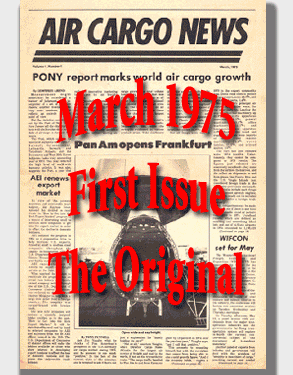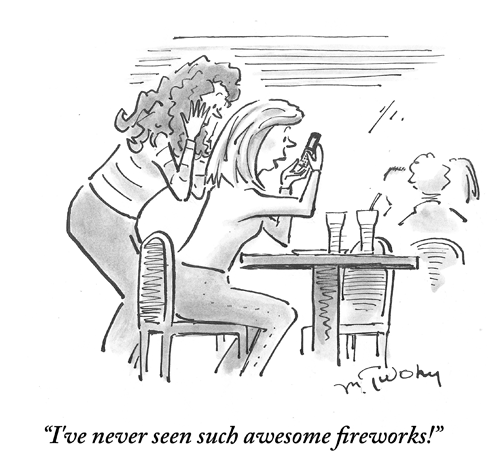
In June 2014,
Germany is a prosperous, rich, and otherwise quite overregulated state,
and yet it does not have any law governing the transport of Dangerous
Goods by Air.
Unbelievable?
Read On!
As a whole, the German Gefahrgutbeförderungsgesetz
(Dangerous Goods Transportation Act) regulates (and properly so) the transport
of Dangerous Goods.
However, the Gefahrgutbeförderungsgesetz
does not make any detailed provision, but simply refers to the “Gefahrgutverordnungen”
(Dangerous Goods Directives), which includes one directive for each mode
of transport.
These directives for the transport modes of road
(ADR), rail (RID), and inland waterway (ADN) were combined in 2009 into
the GGVSEB, Gefahrgutverordnung Strasse, Eisenbahn und Binnenschiff (Dangerous
Goods Directive for road, rail, and inland waterways).
Everything
But Air
There is also a maritime Dangerous Goods Directive—but
no directive for air transport.
The European standard manuals (ADR, RID, and
ADN) have been translated into German and are incorporated by reference
for road, rail, and inland waterway, the IMO’s IMDG code, also in
an official German version, is incorporated by reference for the maritime
mode.
Germany is a signatory state and member of ICAO.
The ICAO “Technical Instructions for the
Safe Transport of Dangerous Goods by Air“ should be applicable,
since this is the agreed worldwide basis for the air transport of Dangerous
Goods.
But that is not quite so in the case of Germany.
A Matter
Of Language
The German constitution requires—understandably
so—that whatever shall be deemed applicable law must invariably
be made available in the official German language.
However, there is no German Edition or translation
of the ICAO TI.
In the late 1980s, the German Civil Aviation
Authority—the Luftfahrtbundesamt—published the document “News
for Airmen“ (Nachrichten für Luftfahrer), which outlined that
“the transport of Dangerous Goods by Air is subject to the requirements
of the ICAO TI in its most recent edition and as also laid down in the
German edition of the IATA Dangerous Goods Regulations (‘IATA Gefahrgutvorschriften’
in German)“.
IATA DGR
Faulty Towers
By this bylaw, published only in a regulatory
document that by no means can be considered applicable German law, the
LBA gave the IATA DGR a semi-regulatory standing since there was simply
nothing else available in German language.
This effort turned out to be less than brilliant,
because it placed shippers and handlers under the obligation to purchase
manuals from IATA which, compared to other modes of transport, were outrageously
expensive in terms of cost.
Also, in its preface, the IATA DGR expressly
declares only the English edition as “binding.”
Unfortunately, the IATA translation is faulty
and often does not meet agreed upon language standards.
IATA also adds requirements in excess of the
ICAO TI in order to promote best business practices and operational safety,
which, as it should be clearly stated here, is a good thing, and indeed
increases safety. However, this mere half sentence: “as also laid
down in the IATA DGR,“ published by the LBA, failed to address the
different legal standing of basic ICAO requirements and additional IATA
requirements. As a matter of fact, non-compliance with ICAO provisions
could be a crime or felony and lead to prosecution, while non-compliance
with the heightened IATA requirements is, in legal terms, a mere breach
of the contract of carriage that will get a shipment excluded from air
transport but does not constitute a breach of law.
Compliance
Not Required
There is, as unbelievable as this may sound to
the DG and compliance professional, no agreed list of penalties for violating
air transport regulations, and no enforcement outlined for non-compliance
with the classification, documentation, marking, and labeling provisions
as set forth by the ICAO TI. Thus, at best, faulty air shippers were penalized
for violating provisions of the ADR for the road transport segment of
their cargo to the airport.
Trainer Qualification
Back in 1998, the LBA decreed that trainers for
the highest staff category for DG by Air (at that time SC3, now SC6; covering
Dangerous Goods acceptance personnel) would have to demonstrate proficiency
with the regulations.
However, trainer licenses were awarded without
expiry date at that time, and the pass mark was 70 percent for the proficiency
test instead of the internationally agreed 80 percent.
In 2002 this changed, and a pass mark of 80 percent
was required, following a 2005 requirement for recertification every five
years.
All that, however, was without any legal basis.
The LBA’s position was that there was no
possibility to legally challenge these trainer tests and accreditation
requirements, and would-be trainers were only informed whether or not
they had passed without revealing actual grades.
The situation literally exploded in the LBA’s
face when, for example, a Doctor of Chemistry with DGSA qualification
for all five modes of transport—including air and 30+ years of professional
DG experience—had to undergo the requalification… and failed.
In that case, it turned out a number of questions
were worded so poorly that it was impossible to give correct answers,
and since the test required extensive knowledge of air transport load
control provisions (which are never a part of DG training) the LBA faltered
and allowed the good Doctor to retake the test.
This turned out to increase the legal pressure
on the LBA, since no result for this retaken test could be communicated
until a later date more than four months after the test was retaken (while
usually, results are distributed within a mere week). Needless to say,
the Doctor of Chemistry—who very rightfully felt his professional
credentials at stake—went on in his legal proceedings to have this
questionable non-ruling and inactivity of a German federal authority overturned
in a court of law.
What’s
Next?
So what’s coming next?
That remains to be seen.
There is a multitude of regulation stemming directly
from EC regulations; most noteworthy are EC directives 965/2012 and EC
895/2008, which Germany failed to implement.
The EU-OPS (covering the transport of goods and
passengers to, from, and through the EC by means of air transport) are
implemented and applicable, but as for the transport of dangerous goods
the EU-OPS simply refer to the provisions made in the ICAO TI, same as
the German Air Transport Act (Luftverkehrsgesetz), so it’s back
to square one.
Certainly whoever has been penalized in one way
or another for unlawful on non-compliant transport of goods by air in
Germany could reopen the case and require a refund, since there was no
legal basis.
Also, back in 2013 the LBA communicated to selected
carriers and ground handling providers that they deemed the indication
of the number of pieces containing so-called “Excepted Lithium –
Batteries in accordance with part II of the applicable packing instruction“
mandatory, although there was no such requirement in either the ICAO TI
or the IATA DGR, and no state variation has been listed in either of the
two publications.
In 2013 alone, Dutch shippers had several Lithium
battery shipments stuck in FRA without legal grounds.
Another unpublished German requirement is the
inadmissibility of “Zippo” lighters carried by passengers,
although no other state worldwide has such a requirement.
It actually stems from a translation or, more
precise, interpretation error made years ago by the LBA; it isn’t
published anywhere else save for the LBA’s website.
So if your precious armed forces service memento
was taken away from you when you left Germany some time ago, feel free
to file for compensation. There was no legal basis for your loss.
In the meantime, the LBA says that it is in ongoing
talks with the German Federal Ministry for Transport, Construction, and
Urban Development “to create a valid source for the transport of
Dangerous Goods by Air and an associated penalty code.“
This, in 2014—they must be joking!
Explosive
Issues
And here’s a tidbit of information that
might interest folks over at FAA and PHMSA:
Articles and substances in Class 1—explosives—must
be classified by a competent national authority.
In Germany that’s the BAM; the Federal
Institute for Materials Research.
Credit where credit is due, the BAM’s technical
experts enjoy worldwide respect and deliver superior work in all areas
for which they’re responsible.However, the air transport of explosive
items classified by the BAM from and through Germany simply is not regulated
by German law, creating a loophole that might void a number of certifications
and permits.
At the next appearance of Ms. Merkel (the German
chancellor) or Mr. Dobrind (the German minister for transport) complaining
about structural shortcomings in other states, they may be well advised
to look at their own turf first.
Jens
|




















